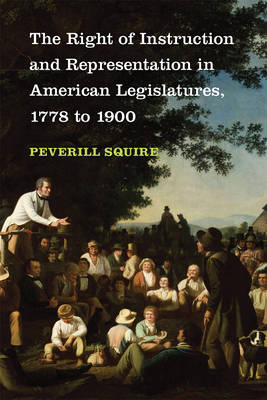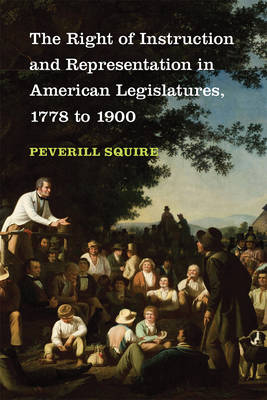
Door een staking bij bpost kan je online bestelling op dit moment iets langer onderweg zijn dan voorzien. Dringend iets nodig? Onze winkels ontvangen jou met open armen!
- Afhalen na 1 uur in een winkel met voorraad
- Gratis thuislevering in België vanaf € 30
- Ruim aanbod met 7 miljoen producten
Door een staking bij bpost kan je online bestelling op dit moment iets langer onderweg zijn dan voorzien. Dringend iets nodig? Onze winkels ontvangen jou met open armen!
- Afhalen na 1 uur in een winkel met voorraad
- Gratis thuislevering in België vanaf € 30
- Ruim aanbod met 7 miljoen producten
Zoeken
The Right of Instruction and Representation in American Legislatures, 1778 to 1900
Peverill Squire
Hardcover | Engels
€ 109,45
+ 218 punten
Omschrijving
The Right of Instruction and Representation in American Legislatures, 1778 to 1900 provides a comprehensive analysis of the role constituent instructions played in American politics for more than a hundred years after its founding. Constituent instructions were more widely issued than previously thought, and members of state legislatures and Congress were more likely to obey them than political scientists and historians have assumed. Peverill Squire expands our understanding of constituent instructions beyond a handful of high-profile cases, through analyses of two unique data sets: one examining more than 5,000 actionable communications (instructions and requests) sent to state legislators by constituents through town meetings, mass meetings, and local representative bodies; the other examines more than 6,600 actionable communications directed by state legislatures to their state's congressional delegations. He draws the data, examples, and quotes almost entirely from original sources, including government documents such as legislative journals, session laws, town and county records, and newspaper stories, as well as diaries, memoirs, and other contemporary sources. Squire also includes instructions to and from Confederate state legislatures in both data sets. In every respect, the Confederate state legislatures mirrored the legislatures that preceded and followed them.
Specificaties
Betrokkenen
- Auteur(s):
- Uitgeverij:
Inhoud
- Aantal bladzijden:
- 216
- Taal:
- Engels
Eigenschappen
- Productcode (EAN):
- 9780472132331
- Verschijningsdatum:
- 23/02/2021
- Uitvoering:
- Hardcover
- Formaat:
- Genaaid
- Afmetingen:
- 157 mm x 231 mm
- Gewicht:
- 439 g

Alleen bij Standaard Boekhandel
+ 218 punten op je klantenkaart van Standaard Boekhandel
Beoordelingen
We publiceren alleen reviews die voldoen aan de voorwaarden voor reviews. Bekijk onze voorwaarden voor reviews.











